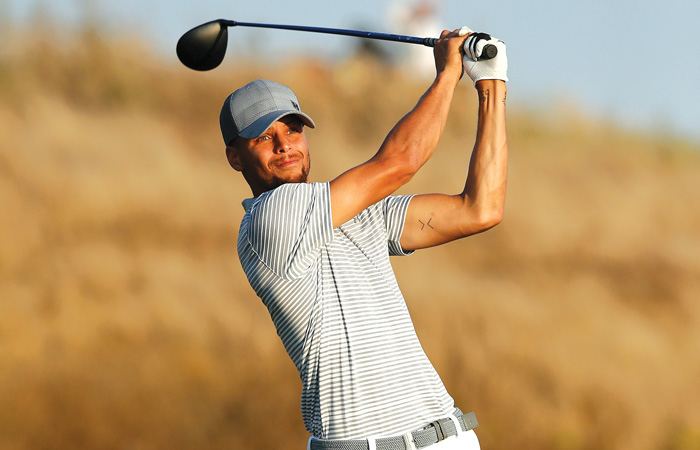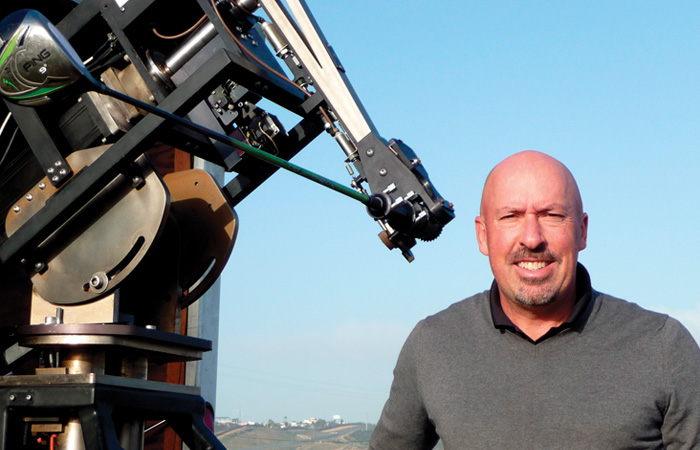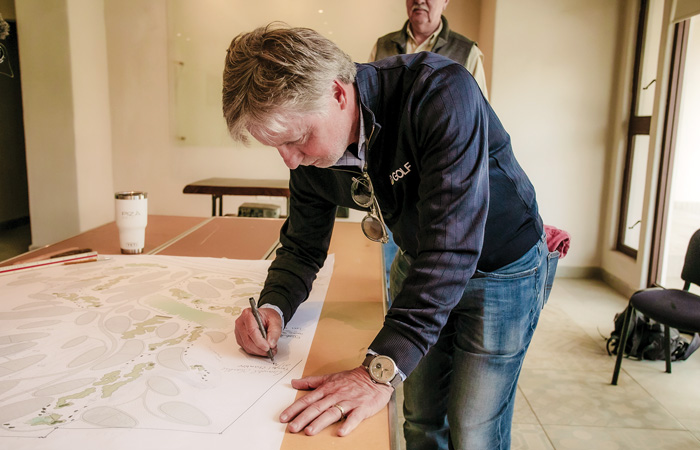Many golfers believe that the pros make great swings and only miss a few shots here and there in competition, because of not being in the right frame of mind, or having a momentary lack of focus or choosing an incorrect club or, if nothing else, experiencing sheer bad luck. After all, they have access to the best instructors, fitness trainers, mental-game coaches and equipment. What else could it be?
The perfect opportunity to test that hypothesis came during the PGA TOUR Champions’ West Coast swing, which began with the Hoag Classic at the Newport Beach Country Club in Orange County, California. It was followed by the Galleri Classic presented by Spotlight Casino 29 at the Mission Hills Country Club in Rancho Mirage/Palm Springs, Southern California.
It all began with a question posed to Jack Nicklaus, who was the guest speaker at the Hoag Classic Community Breakfast sponsored by Hoag Orthopedic Institute. What thoughts did the G.O.A.T have in his heyday when he was making his best shots? “I never worried about the mechanics. Mechanics is you take it from here, put it here, take it here. I never did any of that. I swung the golf club and put it in a path that I felt like I needed to, for the shot I wanted to play. And I had the shot in my head, and I made my body do what I wanted it to do.”
Fast forward to the Tour players of today. Which of our hypothesized issues could they possibly have? The TOUR Champions’ players are all legends of yesteryear, with decades of experience in managing their way around a golf course, handling their short game and putting extremely well. Now have the added bonus of modern equipment – clubs and balls – that gives them an edge compared to their days on the regular Tour. The question posed to all those interviewed was, “What do you still struggle with in your swing, and what ball flight does it result in?”
Padraig Harrington, a great seeker of golf swing information, and a keen teacher of golf to average golfers on social media, had a very prompt reply. “I think most guys, when we get to this age, we fear the left-hand side of the golf course. Drawing the ball is for young guys, and I think when you get a little older, you’ve hit one too many shots left. Anything going left is very upsetting for me. If I’m hitting hooks, (I’m) not playing good golf, and I would have a fear of that.”

What causes his hook? “I tend to stop and back up a little bit and lean back, and I’ve not released the club. And then I have a very unfortunate reactionary late release. So the cure for it is to be brave and release the club from the top of the swing, which most amateurs don’t want to do. If you don’t want to hit it left, release the club as hard as you can from the top of the backswing, and that’s going to be a constant release. Whereas most hooks are somebody trying not to release the club, and then it gets too late, they’re stuck and it flips.”
Another golfer who in keenly analytical about all aspects of golf is Kirk Triplett. He has struggled with a lack of consistency and, “I just end up in a groove where I just kind of play my miss (short right) all day.”
Can he guarantee the short-right miss? “Yeah. But if I hit a good one—I’m afraid of hitting a good one. I can’t really plan for that. I’m putting more effort in and getting less energy to the ball.” For Triplett, it’s mainly a need to hit a solid enough strike to control the ball flight characteristics.
“As a competitive golfer you play in so many different conditions, you have to have a strong ball flight, or you have to be able to control the parameters of your ball flight – trajectory and spin – and you can only do that by hitting the ball in the middle of the face. If you don’t hit the ball in the middle of the face, you’re going to get what the face gives you. You’re not going to be able to choose how to play a shot. If you have a left or right wind and all you can do is hit the ball low off the heel, you’re going to have to aim way too far left to be able to control the ball. So those are the things that have been frustrating for me in the last few years.”
One of the greatest-ever European golfers, Colin Montgomery, stated that his main woes all revolved around trying to get onto his toes at impact. “I struggle with my feet and my heels, which means a struggle with the hook. If you’re too far away from the ball, you tend to struggle with a hook because you hit the ball off the toe, and that causes a hook. I’m trying to get on top of the ball on my toes, and that encourages a better ball flight—I’m higher, I’m taller – and (have) better ball flight because I’m on my toes and not on my heels.”

Notah Begay III claimed, “I struggle with getting out of sequence between my upper body and my lower body. My lower body gets a little too fast, and then what happens as a result is that the club – what a lot of golfers can relate to – gets behind me, and then I usually just miss it right … a blocked shot.”
One golfer, Cameron Percy, had a simple solution to his problem. “I struggle hitting fades – I hit a draw – bad! Lots of pulls.” What should you do to hit more fades? “Hit more balls with a visual thing in front of me – I aim too far right.”
José Maria Olazabál and Corey Pavin both suffer from a lack of distance. While the former smiled and said about his struggles, “Everything, nowadays,” he added that he tries to hit a high draw with his driver to make up for the length he has lost. The latter said, “The biggest thing I work on is to make a good shoulder turn going back. That’s probably the one thing that it’s the hardest thing for me to do, so I work on that most of the time. The bigger your shoulder turn, the further you’re going to hit it and usually the more solidly you’ll hit. It’s just something I’ve always struggled with. I tend to take it a little outside when I take it back, and that limits shoulder turn, so I try to take it inside a little more.”

Finally, Mario Tiziani said that the thing he works most on is tempo, as it tends to get too fast sometimes, especially during his takeaway. He feels the need to prevent a quick takeaway and let it sequence correctly. At the same time, David Duval cited a similar issue and spoke about rhythm, especially during transition, being his biggest issue.
It can be seen that even the best golfers have swing issues that they are constantly trying to fix. Unfortunately, while these seniors may have picked up bits and pieces of older golf swing concepts, and some of them keep abreast with the latest trends in the golf swing, too, there is minimal understanding of “cause and effect.” That will be discussed for all of these pro golfers, in anatomical terms, and using a unique phone-based app to demonstrate, next month.